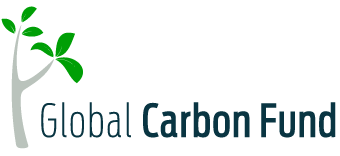Rimba Raya Resumes Operations in Borneo with Epic Legal Victory
Rimba Raya, the world’s largest carbon offset REDD+ project developer, has won a legal victory in Indonesia. This win is a significant step towards resuming operations at their expansive site in Borneo. As reported by Bloomberg on July 11, the Jakarta State Administrative Court overturned Indonesia’s Ministry of Environment and Forestry’s decision, thereby restoring the license for the Rimba Raya Conservation project.
Rimba Raya: Absorbing Carbon Emissions and Generating Carbon Credits
The Rimba Raya project in Indonesian Borneo generates carbon credits by conserving a forest area nearly the size of Las Vegas. These credits mainly come from its High Conservation Value (HCV) peat swamp forest, making it one of the world’s largest REDD+ projects. This unique area separates oil palm plantations from Tanjung Puting National Park, which hosts a vast orangutan sanctuary and has a rich biodiversity. This makes Rimba Raya an excellent conservation project.
Another notable feature of Rimba Raya is its extensive coastal tropical heath and peat swamp forest, which once blanketed much of southern Borneo. This vast swamp area actively removes approximately 130 million tonnes of carbon emissions.
Rimba Raya project was the first REDD+ initiative to be validated under the Verified Carbon Standard (VCS) and achieved triple-gold validation from the Climate Community and Biodiversity Alliance Standard (CCBA).
CarbonPlan, the climate data provider has reported that Rimba Raya has issued more than 30 million credits since 2013 and more than 25 million of those have been retired. This makes it the world’s largest single source of offsetting.
The Epic Legal Victory Fuels Rimba Raya’s Revival
The legal case continued for almost a year, after which the Jakarta State Administrative Court gave its ruling in favor of Rimba Raya. From various credible media resources, we discovered that Rimba Raya can now operate across 36,000 hectares of tropical peat swamp forest in Central Kalimantan, the largest Indonesian province by area.
Rusmin Widjaja, President of The Board of Directors at PT Rimba Raya Conservation
Rimba Raya Conservation will now focus on rebuilding its capacity and is also working to resolve a separate dispute with its partner, Hong Kong-based InfiniteEARTH Ltd.
Going Back in Time of License Revocation and Legal Battle
In April carboncredits.com reported that The Indonesian Ministry of Environment and Forestry cited three main violations by PT Rimba Raya Conservation: The main allegation was the unauthorized transfer of the permit to a third party without approval from the Minister of Environment and Forestry. The second accusation was conducting carbon trading transactions beyond its licensed area, violating its agreement with Tanjung Puting National Park. The company also faced criticism for failing to pay Non-Tax State Revenue (PNBP) as required by the law.
According to Bloomberg, this decision had put the future of the Rimba Raya project at risk. It was significantly worrisome for prominent carbon traders like InfiniteEARTH Ltd and Carbon Streaming Corps who have heavily invested in Rimba Raya’s credits. The situation showcased how complex supply chains and uncertain regulations pose challenges, even though carbon offsets are crucial for projects like Rimba Raya.
KNOW MORE: Rimba Raya REDD+ Project Revocation Rattles Carbon Market
The Future of Rimba Raya: A Bloomberg Analysis
However, the recent court ruling lets Rimba Raya restart activities, rebuild capacity, and resolve disputes with InfiniteEARTH. How will this decision affect the Indonesian carbon credit market and Rimba Raya’s investors? Let’s read the Bloomberg analysis.
Will carbon credit demand rise?
BloombergNEF predicts that demand for these credits could rise sharply, possibly reaching a market value of $1 trillion by 2050. Despite turbulence and differing opinions on credibility, the demand for carbon offset credits is expected to increase in the future. Analysts at BloombergNEF (BNEF) foresee a significant expansion in VCMs, even as companies like Alphabet Inc., Google’s parent company, reassess their involvement.
Bloomberg tried to reach the Indonesian government and the CEO of PT Rimba Raya Conservation for their views but in vain.
Impact on partners and investors
The uncertainty around Rimba Raya’s future has impacted its partners and investors. Verra has temporarily suspended InfiniteEARTH’s account while clarifying its role with PT Rimba Raya. This consequently affected the fair value of the Rimba Raya stream, nullifying it to zero on March 2024.
On May 31, 2024, the company announced major management and board changes. Christian Milau, the former CEO of Equinox Gold, has been appointed as the new interim CEO, with Olivier Garrett taking on the role of board chairman.
However, on a positive note, Carbon Streaming, which has an agreement with InfiniteEARTH for Rimba Raya credits, is evaluating the situation. They are communicating with partners and considering the legal options to protect their investment. The company promised to continue the project, despite unclear regulations in Indonesia, as noted in its Annual Information Form on the SEDAR+ platform. Meanwhile, InfiniteEARTH argued that Indonesia’s legal framework for carbon projects lacks clarity and denied any wrongdoing.
Indonesia plans to lift its ban on overseas credit sales to boost revenue, ensuring compliance with carbon trading rules and the Paris Agreement. All in all, this epic ruling on Rimba Raya is going to etch a history in Indonesia’s carbon credit market.
FURTHER READING: What Makes Forest Project a High-Quality Carbon Removal?
Disclaimer: Data and facts have been collected primarily from Bloomberg.
The post Rimba Raya Resumes Operations in Borneo with Epic Legal Victory appeared first on Carbon Credits.
